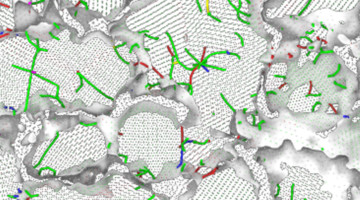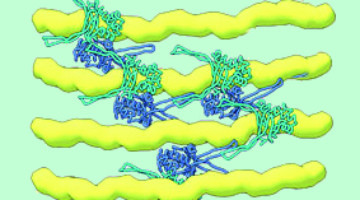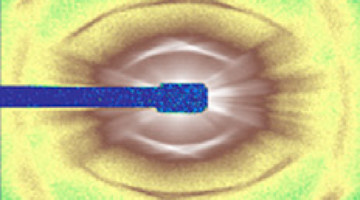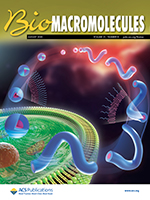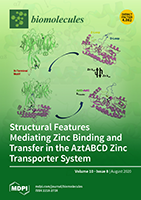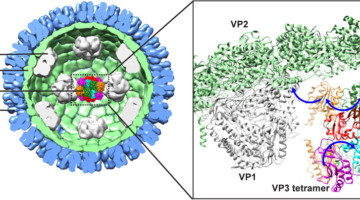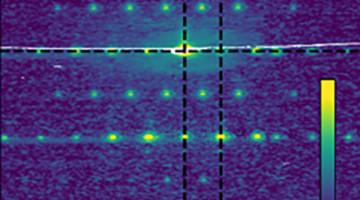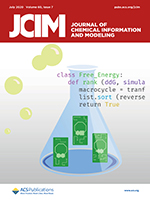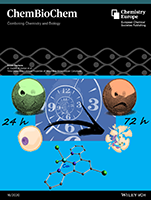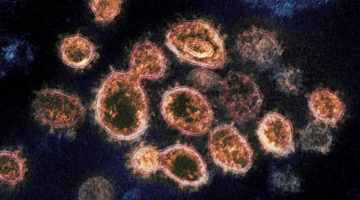Researchers used in situ high-pressure diffraction to resolve a debate about whether a metal’s strength increases or decreases when its grain size decreases below a critical point. The results indicate that ultrastrong metals for future applications can indeed be achieved through grain-size refinement and grain-boundary engineering. Read more »
ALS Work Using Scattering/Diffraction
These techniques make use of the patterns of light produced when x-rays are deflected by the closely spaced lattice of atoms in solids and are commonly used to determine the structures of crystals and large molecules such as proteins.
How Proteins Remodel DNA in Bacteria under Stress
Multiscale, multimodal visualization techniques at the ALS enabled researchers to clarify how proteins remodel bacterial DNA in response to stressful environments. The discovery could lead to new strategies for controlling microbial behavior and, eventually, new ways to fight bacterial infections. Read more »![]()
![]()
Toughening Mechanisms in Carp Scales at the Nanoscale
Scientists have characterized carp scales down to the nanoscale, using the ALS to watch how the fibers in the scales react as stress is applied. The resulting insights provide inspiration for the design of advanced synthetic structural materials with unprecedented toughness and penetration resistance. Read more »![]()
![]()
Thermoinduced Crystallization-Driven Self-Assembly of Bioinspired Block Copolymers in Aqueous Solution
Thermoinduced crystallization-driven self-assembly of polypeptoid-based block copolymers results in delicate control over the nanostructure in aqueous solution. This provides a convenient platform for comparing cellular uptake efficiency of nanostructured assemblies with various morphologies that are otherwise similar. Read more »
Structural Features Mediating Zinc Binding and Transfer in the AztABCD Zinc Transporter System
Zinc homeostasis is critical for bacterial survival and virulence. Extracellular zinc-binding proteins play an important role in this process. This work assesses the role of several flexible or unstructured sequences in zinc binding and transfer from proteins AztD to AztC. The results provide insights into the dynamic nature of these processes and support a previously proposed structural model of transfer. Read more »
Rotavirus VP3 Is a Multifunctional Capping Machine
Rotavirus, a major cause of infantile gastroenteritis, is responsible for the deaths of about 200,000 children per year. Although vaccines are available, the virus still circulates, and a fuller understanding of the viral structures is needed. Here, scientists investigate the structure and function of the last unsolved rotavirus structural protein. Read more »
Artificial Antiferromagnets Facilitate Studies of Domain-Wall Motion
Researchers fabricated artificial spin lattices that undergo a paramagnetic-to-antiferromagnetic phase transition. These artificial antiferromagnets enable studies of dynamical properties that are critical to understanding, and ultimately implementing, real-world applications such as advanced computing and data-storage technologies. Read more »
Evaluation of Free Energy Calculations for the Prioritization of Macrocycle Synthesis
Free energy perturbation methods represent a paradigm shift in drug discovery, where computational methods inform benchtop activities. Macrocycles are highly constrained molecules, often resulting in nonintuitive structure–activity relationships requiring lengthy synthetic routes. Free energy perturbation methods can be used to predict potency, guiding synthetic chemistry efforts to de-risk complex synthesis. Read more »
Time‐Dependent Cytotoxic Properties of Terpyridine‐Based Copper Complexes
The cover feature picture shows the progressive activation of terpyridine‐based copper(II) compounds that are not cytotoxic against various cell lines after 24 h of incubation but become highly efficient after 72 h of incubation, with IC50 values in the low‐micromolar to nanomolar range. Read more »
Antibody from SARS Survivor Neutralizes SARS-CoV-2
Using structural data from the ALS and cryo-electron microscopy, researchers have characterized how an antibody binds to and neutralizes SARS-CoV-2. This work provides the basis for therapeutic and vaccine development for the SARS-CoV-2 virus, which is responsible for the COVID-19 pandemic. Read more »![]()
![]()
- « Previous Page
- 1
- …
- 16
- 17
- 18
- 19
- 20
- …
- 39
- Next Page »
